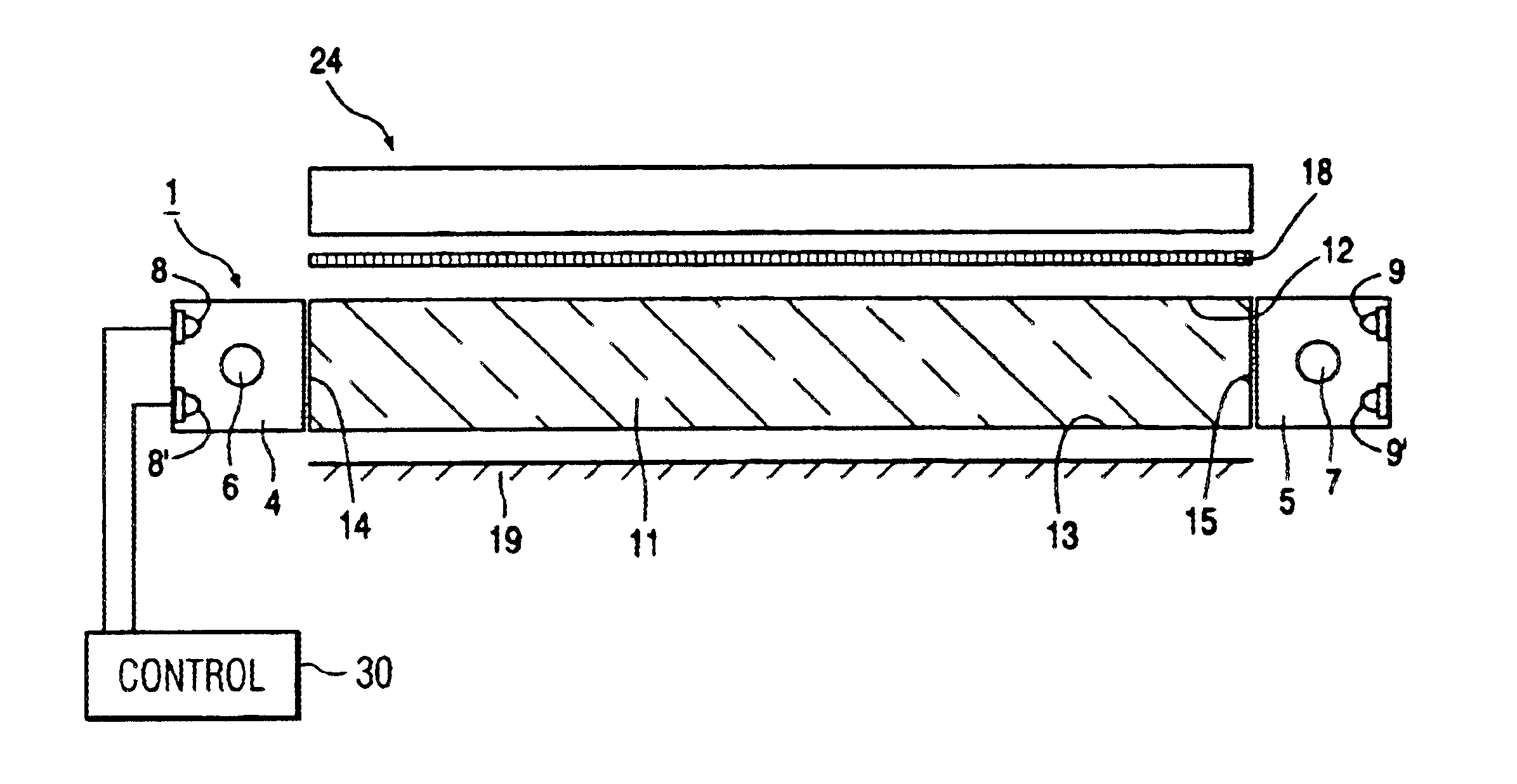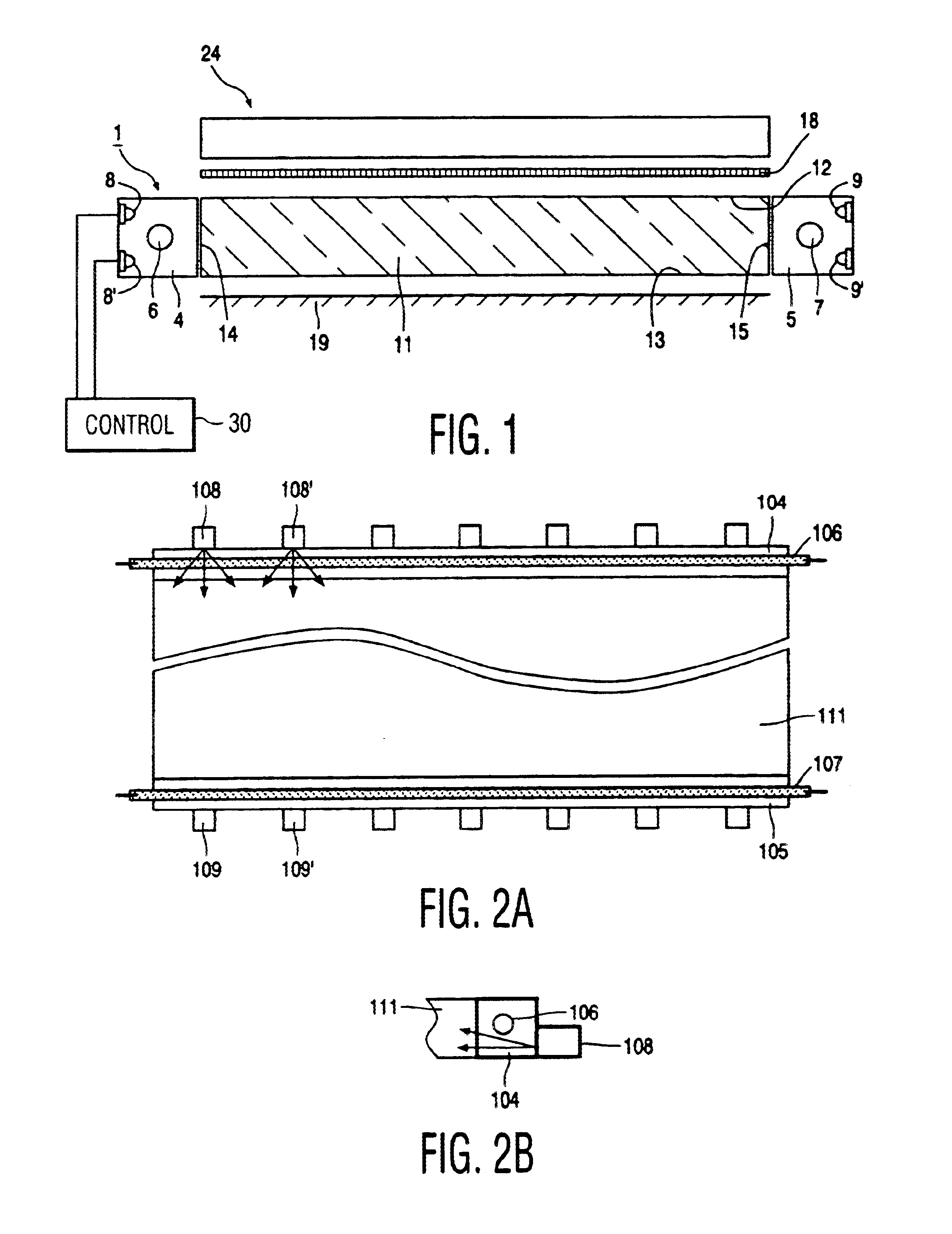Illumination system and display device
a technology of illumination system and display device, which is applied in the field of illumination system, can solve the problems of fixed electromagnetic spectrum of light source, and achieve the effect of maximizing the contrast of images, and reducing the cost of production
- Summary
- Abstract
- Description
- Claims
- Application Information
AI Technical Summary
Benefits of technology
Problems solved by technology
Method used
Image
Examples
Embodiment Construction
The Figures are purely diagrammatic and are not drawn to scale. Particularly for clarity, some dimensions are exaggerated strongly. Where possible, like reference numerals refer to like parts in the drawings.
FIG. 1 is a very diagrammatic cross-sectional view of an example of a display device in accordance with the invention. The illumination system 1 comprises a light-emitting panel 11 of a light-transmitting material that is made of, for example, a synthetic resin, acryl, polycarbonate, PMMA, such as perspex, or of glass. Under the influence of total internal reflection, light is transported, in operation, through the panel 11. Said panel 11 has a front wall 12 and an opposite rear wall 13. Between the front wall 12 and the rear wall 13, light-transmitting edge surfaces 14, 15 for coupling light into the light-emitting panel 11 are situated on either side of the light-emitting panel. In the example of FIG. 1, the illumination system is provided with two light-mixing chambers 4; 5, ...
PUM
 Login to View More
Login to View More Abstract
Description
Claims
Application Information
 Login to View More
Login to View More - R&D
- Intellectual Property
- Life Sciences
- Materials
- Tech Scout
- Unparalleled Data Quality
- Higher Quality Content
- 60% Fewer Hallucinations
Browse by: Latest US Patents, China's latest patents, Technical Efficacy Thesaurus, Application Domain, Technology Topic, Popular Technical Reports.
© 2025 PatSnap. All rights reserved.Legal|Privacy policy|Modern Slavery Act Transparency Statement|Sitemap|About US| Contact US: help@patsnap.com



